Old Galway
ANCO, 50 years a-growing
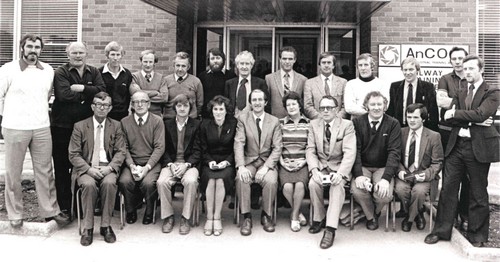
by Tom Kenny
1967 saw a great change in Galway as the industrial estate was being developed as a result of the Government’s decision to designate Galway as a development location, a place which would be the commercial, financial, educational, health, social and administrative centre of the region. The IDA were buying land and building factories in anticipation of attracting industry to the county.
The Parochial School
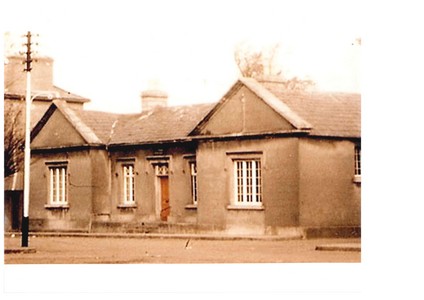
by Tom Kenny
This is the time of the year when children are preparing to go back to school, a time when many of us would think back to our own schooldays, the happiest days of our lives. The issue of primary schooling in Ireland was contentious during the 17th-19th centuries because formal education was provided by Government only in association with Protestant Evangelical Societies and the Church of Ireland.
Street Festivals
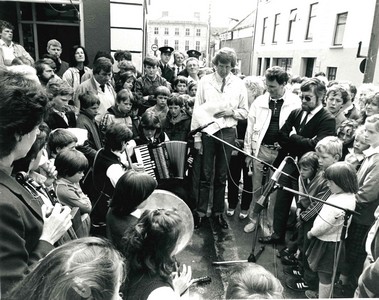
by Tom Kenny
The first street festival held during the Quincentennial year of 1984 in Galway was organaised by High Street, Cross Street and Quay Street from the 23rd – 29 of April. It was opened by Mayor Michael Leahy with the Army Pipe band, St. Patrick’s Brass band, St. Patrick’s Boys Band, Renmore Brass band and the Dockers Fife and Drum Band all playing on the streets.
LIFESAVERS ALL
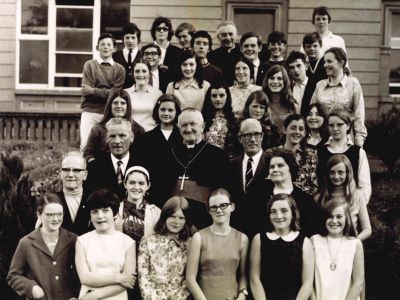
by Tom Kenny
Tuesday the 20th of November 1984 was a sad day in Galway, it was the day Jimmy Cranny died and though he had no family, his extended family of many thousands of people he had taught to swim mourned him and marked the passing of legend. He could be seen at the seashore virtually every evening of the summer for many many years teaching children the basics of swimming, and as some of them progressed to competitive swimming, he provided early morning training sessions for them at the canal on a daily basis.
150 YEARS RACING AT BALLYBRIT
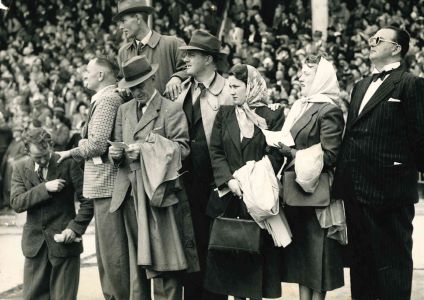
by Tom Kenny
We know that horse races were organised in different parts of County Galway from the middle of the 18th century in places like Kilconnell, Eyrecourt, Rahasane, Ballinasloe, Ballymoe, Carraroe and Bermingham House near Tuam. They were known as ‘racing matches’. In 1764, there was a 5-day meeting held at Knockbarron near Loughrea and between 1829 and 1857, 15 meetings were held in Kiltulla near Ballybrut. In 1867, a series of races were organised at Bushfield near Oranmore.
FORTHILL CEMETERY, 1905
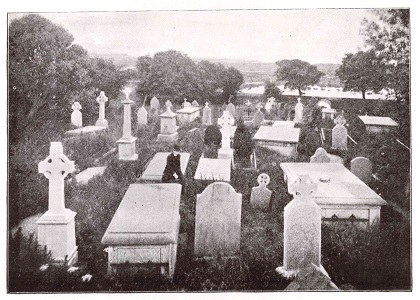
by Tom Kenny
It is often said that one cannot claim to be a true ‘old Galwegian’ or ‘auld shtock’ unless one has some relations buried in Forthill Cemetery at Lough Athalia. It is probably the oldest cemetery in Galway. The Augustinians have been associated with it since the year 1500. The Augustinian convent or priory was built there by Margaret Athy at the request of a friar, Richard Nagle and it probably stood on level ground at the upper level of Forthill. The grounds of the priory extended quite a bit along the shores of Lough Athalia, at least to the site where St. Augustine’s Well is today. Nothing at all remains of the priory except some drawings on the 1625 and 1651 maps.
THE FORSTER PARK HOTEL
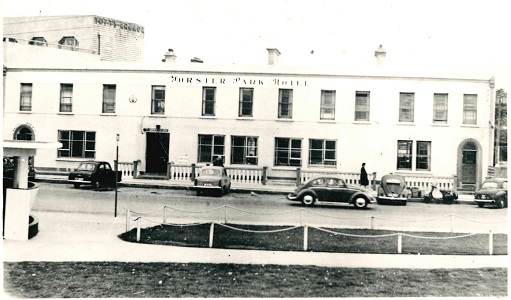
by Tom Kenny
There was a long discussion at an Urban District Council meeting in July 1935 about whether to allow purchasers of plots in front of the house at Forster Park, recently occupied by Dr Michael O’Malley, to proceed with the building immediately, or to force them to defer construction until the road along the promenade had been widened. The plots had been advertised as building sites. One of the objectors said “We are a long time looking for a town planning scheme in Galway, and now that we have it, I strongly object to this building. We have one of the finest hotels in the country (The Eglinton) and now you want to destroy it”.
MOUNT ST. MARYS

by Tom Kenny
In the late 12th century, the Diocese of Annaghdown came into existence in the area surrounding the city of Galway. In 1324, it was united with Tuam but the Anglo-Norman families refused to accept direction from Tuam. In 1484, Pope Innocent VIII made St. Nicholas’ Church a Collegiate Church governed by a warden (not a bishop) and 8 vicars. Edmund ffrench, the last warden was made Bishop of Kilmacduagh in 1824. On April 27th, 1831, the Bull ‘Sedium Episcopalaism’ was issued by Pope Gregory XVI erecting the Diocese of Galway. On October 23rd 1831, the first Bishop of the Diocese, George Joseph Plunkett Browne was consecrated and in 1844, he was succeeded by Laurence O’Donnell. John McEvilly became Bishop in 1857.
